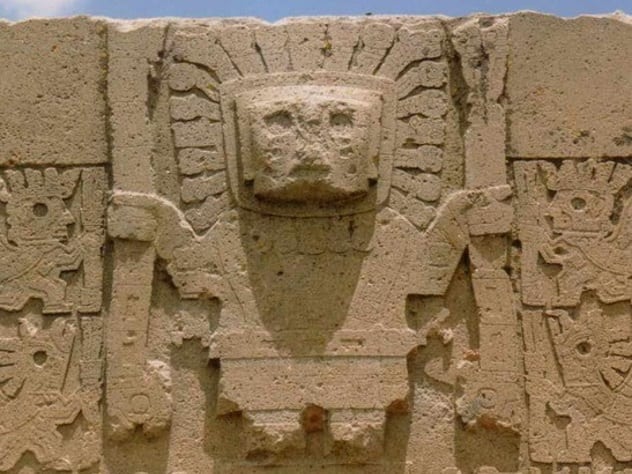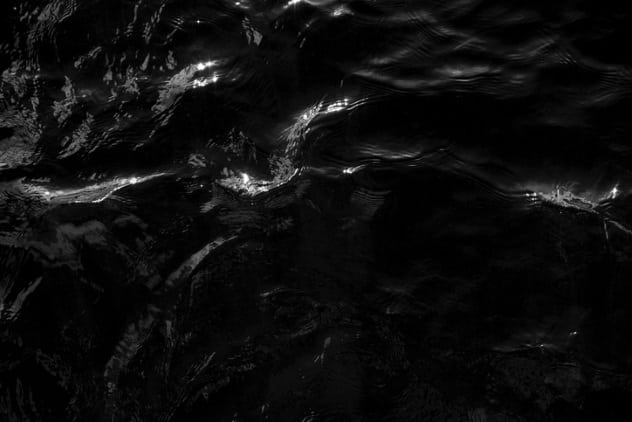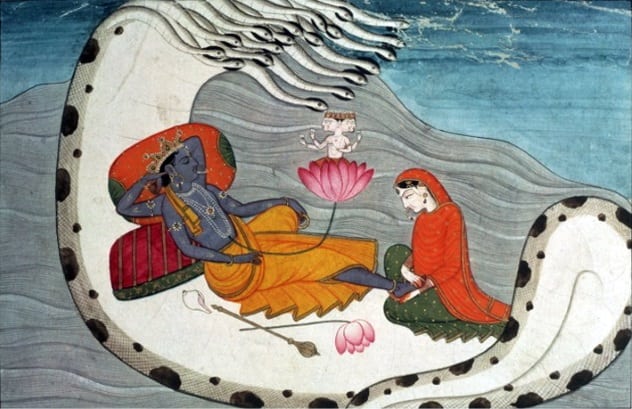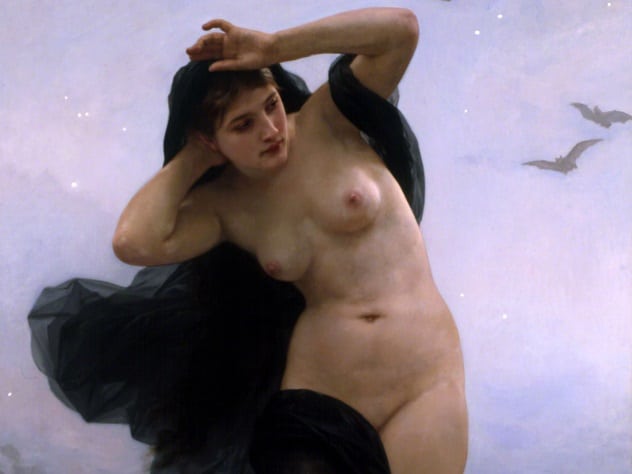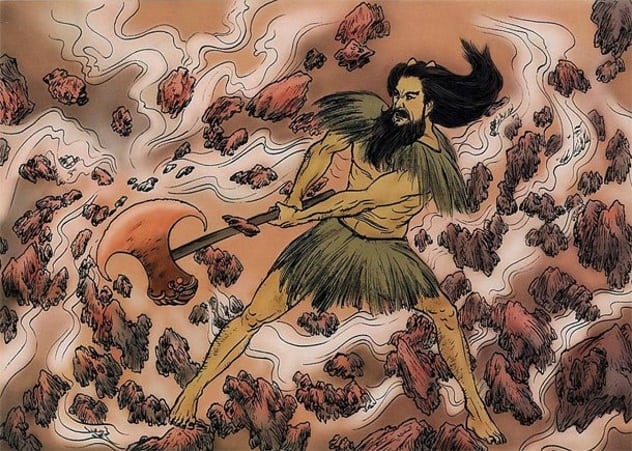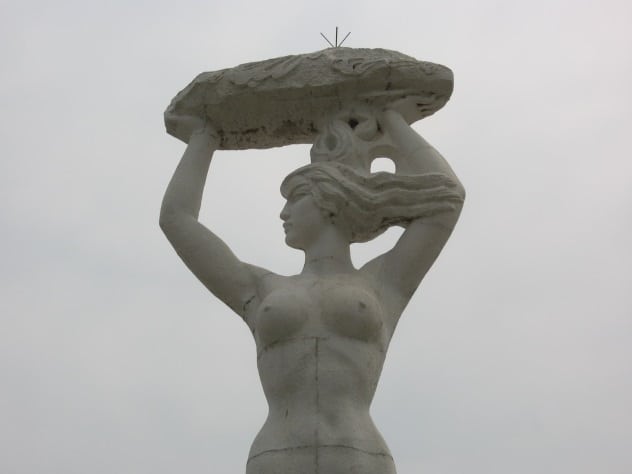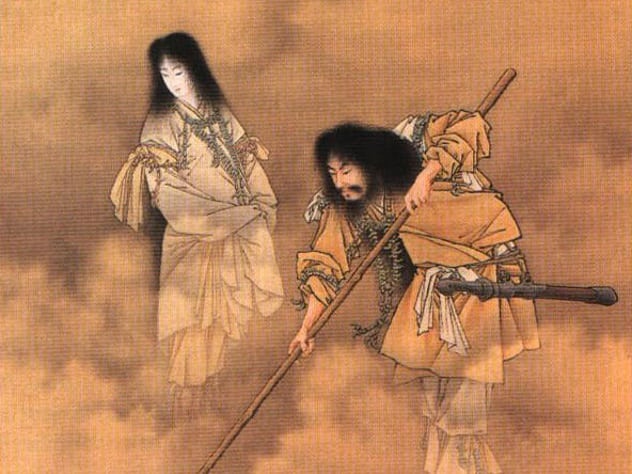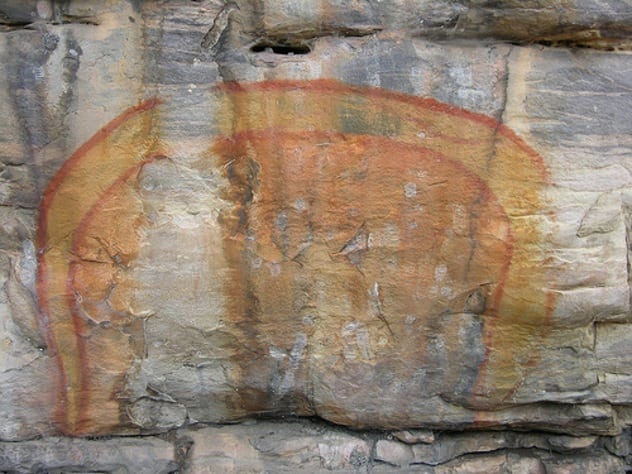While parallels between neighboring cultures have never been uncommon, it is very rare to find shared ideas and traditions that stretch across oceans and continents. One question, however, seems to be consistent no matter the culture or the time period—we want to know where we came from, what our purpose is, and who created the world. This mystery has fascinated humanity since the beginning of time, and while no one can be sure who gets to take the cake just yet, there have been some downright awesome legends. This list will attempt to count down some of the best creation stories, the craziest answers to that all too common question. Perhaps it is here, in this great similarity, that the beauty (and wackiness) of our differences shine the brightest.
10 Viracocha
Like many mythologies, the Incas’ pantheon also had a hierarchy, and Viracocha sat at its head (for good reason). As far as the Incas were concerned, Viracocha was the first deity as well as the maker of all the other gods. In his free time, Viracocha also accomplished other minor feats, such as forming the heavens, Earth, Sun, Moon, and all living beings. According to the legends, it is thought that humans were his second (way better) experiment, after a first attempt at life resulted in a race of mean rock giants who . . . weren’t very good at listening. And so, with a grand showing of grace and regal bearing, Viracocha drowned them all back into stone form with a huge flood. On his second attempt, Viracocha opted for the more soft and malleable clay, with which he created the masterpieces that are us. Presumably hoping not to repeat history, he then decided to pass down many gifts, such as clothes, language, agriculture, arts, and animals.[1] Thanks, Viracocha!
9 Cherokee Creation Myth
In Cherokee lore, the Earth began as a messy blob of darkness and water floating around below Galunlati, the spirit world. The animals, who were partying it up in Galunlati, continued to reproduce until it got a little too crowded, and they needed to find a solution—they wanted to move to Earth. Wary of hidden dangers and curious as to what lay below the water’s surface, the animals sent the water beetle as a scout to get a feel for the lay of the land. Never one to disappoint, the Christopher Columbus of the spirit world dove down to the bottom and brought back some mud. The magical mud grew and grew, until it became the land we know and love today. Eager to find a new home, the birds of Galunlati ventured down to Earth, only to find the ground far too soft to settle in. Buzzard, a giant avian fellow, was one of those looking for a dry spot but eventually grew so tired that his wings dragged against the mud, raising the land into mountains and valleys.[2] Eventually, the land dried out, and the animals moved down onto our world. Fed up with the darkness, the animals decided to raise the Sun up to give the Earth light. This wasn’t without casualties, though, as many animals were burned red during the valiant effort. (Poor crawfish.) Finally, after everything settled, the humans appeared, and the rest, as they say, is history.
8 Vishnu And Brahma
One of the many Hindu creation stories, this one starts in the void of nothingness. A dark ocean playing host to Shesha, an infinitely giant cobra, washed up against the shores of nothingness. Vishnu, who was sleeping soundly in the shelter of Shesha’s coils, was roused from his slumber by a deep hum. As the night was shattered, a majestic lotus flower sprouted forth from Vishnu’s belly button, and Brahma, his servant, was born from it. With a single command, Vishnu ordered the creation of the world and then swiftly disappeared. With a dazzling display of artistry and power, Brahma quelled the wind and sea, split the lotus in three, and created the heavens, Earth, and skies. With the Earth shattering parts out of the way, Brahma spent his time crafting the animals, plants, and humans, until the whole world sang of his creation.[3]
7 Nyx’s Egg
This Greek myth is likely one of the more familiar stories on this list, at least in part. But few remember Nyx, the black-winged bird who laid the golden egg. (Note that she has also been depicted in a humanlike form.) This golden egg birthed Eros, the god of love. The broken halves of the egg became the sky and the Earth. Naming them Uranus and Gaia, he commanded them to fall in love, and the two second-generation deities had many, many children.[4] Then comes the familiar tale of Kronos (aka Cronus), who ate his children in fear of their budding powers—that is until Zeus (who was saved by his mother) led a rebellion to free himself and his siblings from their father’s oppression. In the aftermath, the victorious young deities decorated the Earth and sky with life and stars. From there came the stories of Prometheus and Pandora’s Box, until the Earth as we know it was made. For a culture so obsessed with science and philosophy as the Greeks, they sure knew how to spin an epic tale.
6 Ymir And Audhumla
Far north of Greece lived the ax-swinging, seafaring Norsemen, who had a crazy creation story of their own. Before the likes of our big-screen favorites Thor and Loki came Ymir, a huge frost giant formed from the dripping ice of Niflheim. Ymir, the first of the giants, slept until a man and woman formed from the sweat of his armpit, and his legs spawned a six-headed child. Thus, the frost giants were born. Meanwhile, the melting ice had also formed Audhumla, a godly cow whose milk gave nourishment to Ymir. As Audhumla licked the ice, Buri, the first god, was formed. His grandchildren, born of giant and god, grew tired of the useless giants and decided to kill Ymir. As Ymir died, his blood flooded the land, wiping out all but a two of the frost giants. The grandchildren then brought the body to Ginnungagap and dismembered each piece of him to form the world.[5]
5 Rangi And Papa
From the beautiful land of New Zealand comes a wonderfully gruesome tale of fratricide and cannibalism. It all began with Rangi and Papa, the heaven and Earth from which all of creation were born. Alas, they were inseparable, and so heaven and Earth were covered in darkness. Sick of the darkness and eager for change, their children came together for a discussion. Tu-matauenga, father of the fierce humans, wanted to slay the parents, but Tane-mahuta, father of the forests, wanted to separate them instead, hoping that their father and mother could be the sky over their heads and the earth beneath their feet. Eventually, all but Tawhiri-ma-tea, father of winds and storms, agreed, and they proceeded to carry out their plan. With gargantuan effort, Tane-mahuta finally managed to separate his parents after a string of his brothers’ failures, and Rangi and Papa cried out in anguish. What would ensue can only be called the most bizarre civil war ever, as the brothers fought over feelings of betrayal or just simply because they found the others weak. Disappointed in his brothers’ cowardice, Tu-matauenga (father of humans) killed them all and ate them, condemning them to an eternal fate as his godly snacks. Only the father of winds and storms survived in the skies, and legend has it that he blows his vengeful gales against the shores to this day.[6] Well, that sure escalated quickly.
4 Pangu
The Chinese creation legends tend to come in two stages: Pangu, creator of the heavens and Earth, and Nuwa, mother of people and humanity. To this day, songs and poems about Pangu are still sang by the Zhuang people of China.[7] As legend would have it, Pangu, in embryonic form, slept and grew within a giant black egg for 18,000 years, all while the chaos of the universe slowly gained a healthy balance of yin and yang. Upon awakening, Pangu found himself in a bit of a predicament—he was stuck as a yin-yang sandwich. With a huff and a puff, he pushed the egg apart, creating the sky and the Earth while cleaving apart the fabric of yin and yang. The longer he held the sky and Earth apart, the more he grew, spreading the distance further and further every day (exactly 3 meters [10 ft] per day). Though there are many versions of this myth, one of the more popular ones has Pangu die after another 18,000 years, with his body forming parts of the Earth and all of nature within it. The poor guy never even got a break.
3 Nuwa
Nuwa, one of the first deities in Chinese mythology, is said to have existed since the beginning of time. And with an empty, albeit beautiful, world remaining after the death of Pangu, an understandably lonely and bored Nuwa decided to exercise her right to freedom of creative expression, promptly creating life every day for a week. The order goes: chickens, dogs, sheep, pigs, cows, horses, and finally humans.[8] On the last day, Nuwa took clay and began to mold it in her image. (This is slightly concerning, as many ancient artworks depict her as a snake with a woman’s head.) After making a few hundred beautiful figures, Nuwa grew tired of the tedious work and decided to expedite the process by swinging around a rope with mud on it. As such, the beautiful clay people became wealthy nobles, while the sorry splatters of mud became the common peasants. (So that’s where discrimination came from.) Another variation of the legend suggests that the rain melted some of the figures before they dried, thereby giving birth to sickness and disease—apparently the casual slip-up of an omnipotent and omniscient being.
2 Izanagi And Izanami
Hailing from neighboring Japan, Izanagi and Izanami were seventh-generation deities in a growing line of kami. The sibling couple were commanded by the older generations of gods to deal with the formless chaos that was the world. Tasked with a monumental mission and equipped with a heavenly jeweled spear known as Ama no Nuboko, they decided to give the messy void a stir with the tip of the godly armament. As the spear was lifted back up, a drop fell off it and formed an island. Izanagi and Izanam decided to settle down and build a palace there. In an effort to start a family, they did what every deity does when they want to reproduce—circle around a heavenly pillar in opposite directions. When they finally met on the other side of the pillar, Izanami couldn’t help but rejoice in her great fortune, exclaiming “What a fine young man!” to which Izanagi replied, “What a fine young woman!”[9] It was a picture of serenity and joy, though Izanagi did complain that his sister had stolen his initiative. Unsure of what to do next, the pair eventually were guided along with the helpful advice of some songbirds, and eventually, a child was born. Unfortunately, the child was born limbless and without bones (apparently gods suffer from inbreeding, too), and the couple were absolutely devastated. After abandoning the child on a boat, they proceeded to try again, alas to no avail. Discouraged, they went back to heaven to ask for help, where they discovered that Izanami’s impatient greeting was preventing a healthy childbirth. Promptly reattempting the circling ritual, they corrected their previous mistake, and Izanami would go on to birth the islands of Japan and many of nature’s manifestations.
1 The Rainbow Serpent
In the land Down Under, the oral tradition of dreamtime stories still persists to this day. According to the Aboriginals’ beliefs, the stories are the beginning of knowledge, depicting the creation of the world and the great ancestral spirits of the dreamtime. In the days of the dreamtime, before the Earth had awoken, a rainbow snake slumbered below the surface. All the spirits and the animals lay sleeping beneath the ground. One day, the serpent awoke and broke through the surface, traveling all over the Earth, leaving winding trails wherever she went. Upon her return to her resting place, she called out to the frogs, who had stored water in their bellies during their slumber. After the serpent tickled the frogs’ stomachs, their laughter released water across the world to form rivers, lakes, and oceans. Out of the water sprouted much life, and the animals woke one by one. The benevolent rainbow serpent then made laws, stipulating clearly that those who followed them well would be granted humanity while the, ahem, cheekier spirits would be unceremoniously turned into rocks and mountains. And so, humans and their tribes were created, and they knew the land was theirs forever.[10] A first year student recovering from Myalgic Encephalomyelitis, I’m really enjoying writing again alongside my physical rehab routine. Really enjoyed researching for this one and can’t wait to get started on the next.
